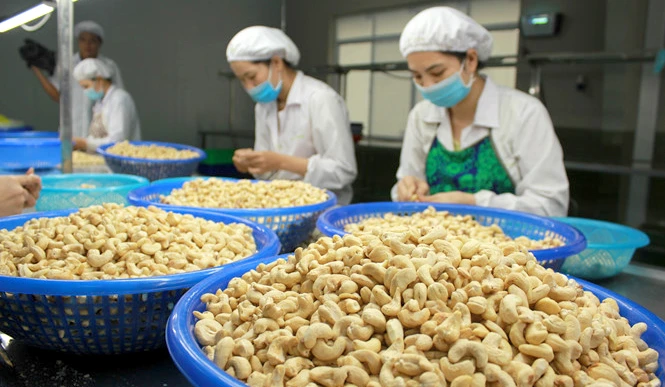
This volume is equal to 58.3% of the total amount of cashew nuts imported by Vietnam in 2020. This has brought the import of cashew to an unusually high level in the last eight months, causing Vietnam to face a trade deficit.
Cashew is one of Vietnam's key export products. Since 2010, cashew nut exports have reached USD 1 bn, with a turnover of USD 1 bn per year or more, ranking 3rd out of nine items of agricultural and aquatic products, bringing Vietnam to number one position in the world in cashew exports. However, due to the confusion from planning of raw materials to planting, tending, processing, and exporting, the results have not been as expected. In 2020, Vietnam exported USD 3.21 bn of cashew nuts, seeing a decrease of 2.3% in turnover, while the quantity increased by 13% because the average export price decreased by 13.6%. It is a worry for many businesses on how to ensure the source of input material.
Therefore, for cashew nut exports from Cambodia to Vietnam, a large part requires Vietnamese enterprises to cooperate, invest in planting materials in Cambodia and bring them to processing factories for export from the country. In fact, the cashew nut growing area in Vietnam in recent years has been decreasing steadily, from nearly 450,000 ha to just over 300,000 ha, leading to a decline in cashew nut production and a decline in quality as well. The reason is due to erratic weather changes, the proliferation of pests and diseases, degeneration of varieties, inadequate investment in farming techniques, the mentality of following the crowd, competing for planting, and not getting along with each other. Currently, up to two-thirds of raw cashew nuts have to be imported to meet processing requirements. This makes cashew nut processing enterprises having to struggle to meet orders.
Since 2005, Vietnam has been one of the largest import markets for raw cashew nuts in the world, mainly from 25 countries, and the most from the Ivory Coast in Nigeria. However, due to the diversity of import sources, everyone imports, leading to the uneven quality of raw cashew nuts. More worrisome is that many shipments of raw cashew nuts from Africa have been found to have beetles. This is the most dangerous insect ever and must be put on strict quarantine lists by many countries. Notably, many countries in Africa, instead of exporting raw cashew nuts to Vietnam, have turned to export processing to improve the value of finished products. This means that sooner or later the supply of this produce will become less and less, and Vietnamese cashew nut export processing enterprises will fall into a state of passivity.
Vietnam's cashew nuts have been present in over 40 countries and territories for several years, of which the US market ranks first with 40%, China 20%, Europe 20%, and the rest are exported to Russia, Japan, and the Middle East. Therefore, the import of raw cashew nuts from Cambodia is replacing most of the sources, so it is not a cause for concern, but on the contrary, can be expected to contribute to improving input for cashew nut processing. There are advantages such as road access, large quantities, stable supply, favorable price, and convenient quality control of raw material.




















